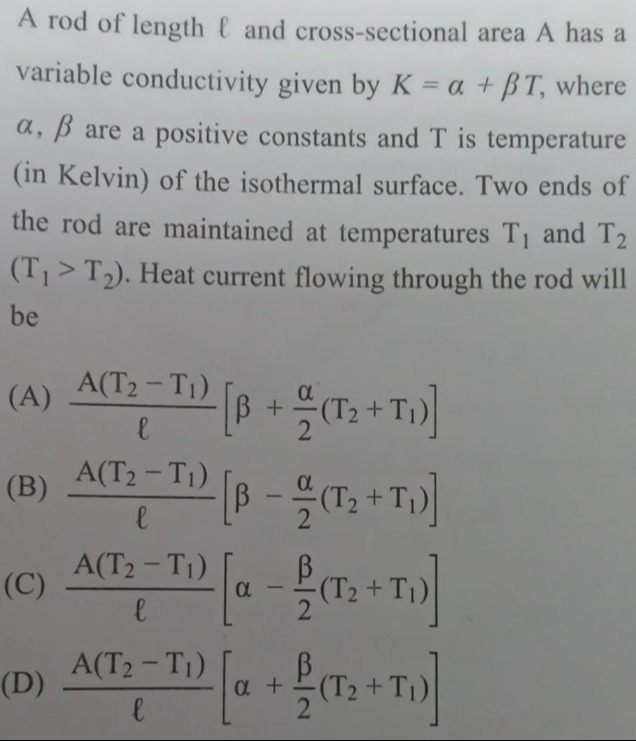Question
Question: A rod of length $\ell$ and cross-sectional area A has a variable conductivity given by $K = \alpha +...
A rod of length ℓ and cross-sectional area A has a variable conductivity given by K=α+βT, where α,β are a positive constants and T is temperature (in Kelvin) of the isothermal surface. Two ends of the rod are maintained at temperatures T1 and T2 (T1>T2). Heat current flowing through the rod will be

ℓA(T2−T1)[β+2α(T2+T1)]
ℓA(T2−T1)[β−2α(T2+T1)]
ℓA(T2−T1)[α−2β(T2+T1)]
ℓA(T2−T1)[α+2β(T2+T1)]
ℓA(T2−T1)[α+2β(T2+T1)]
Solution
For one‐dimensional steady state conduction, Fourier’s law gives
i=−KAdxdT,
where the conductivity is
K=α+βT.
Since the system is in a steady state, i is constant. Writing:
dxdT=−A(α+βT)i,
we separate variables and integrate from x=0 to x=ℓ and T=T1 to T=T2:
∫0ℓdx=−iA∫T1T2(α+βT)dT.
This gives:
ℓ=−iA[α(T2−T1)+2β(T22−T12)].
Solving for i:
i=−ℓA[α(T2−T1)+2β(T22−T12)].
Now note that:
T22−T12=(T2−T1)(T2+T1).
Thus,
i=−ℓA(T2−T1)[α+2β(T2+T1)].
Since T1>T2, the factor T2−T1 is negative. Therefore, the heat current (directed from T1 to T2) is given by
i=ℓA(T2−T1)[α+2β(T2+T1)].
